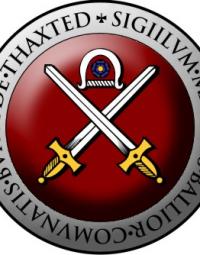

Thaxted
Parish Council


Parish Council
 Much has been written about Thaxted and its history. Here we only touch the surface and hope that you may want to enquire further. There are a number of publications to be found in Thaxted which can extend the information here. In Town Street, the Thaxted Information Centre and Library, opposite the Post Office, can provide copies of these as well as a Town Trail leaflet (50p).
Much has been written about Thaxted and its history. Here we only touch the surface and hope that you may want to enquire further. There are a number of publications to be found in Thaxted which can extend the information here. In Town Street, the Thaxted Information Centre and Library, opposite the Post Office, can provide copies of these as well as a Town Trail leaflet (50p).
Thaxted has a long history as is evident from the Domesday Book which records Thaxted as a well-established and prosperous community by the end of the Saxon period. It is as a medieval town, however, that Thaxted is renowned. The town was owned by a number of manors, the largest was the Thaxted Manor, based on the south-west side of Town Street. A market was granted to the town in 1205.
There was a rapid expansion in the town in the 14th C as from the 13th century it had become a centre for a cutlery industry. A large number of the population were employed in the cutlery trade. Quite why Thaxted was chosen is not known, although it is known that cheap rents were charged by the landowners. The industry appears to have died out by the sixteenth century.
The earliest record of a church was in 981, this being replaced with money from cutlery in the fourteenth and fifteenth centuries. Town Street runs down hill from the church in a south-easterly direction and the Manor House stood on the south-west side of Town Street. Little survived after 1400 and the last remaining evidence was lost in the mid-eighteenth century.
The Guildhall at the top of Town Street was more likely a “Moot” or meeting hall, still used today for Parish Council and other meetings. There were other guildhalls in Thaxted, in particular there was a Guild Hall built by the Fraternity of St John the Baptist in Newbiggen Street.
Settlement spread out from the core along Bolford Street, Newbiggen Street, Park Street and Weaverhead Lane. Local historians have found many examples of medieval coins and tokens in the Park Farm fields around the Church Mill which suggests it was an area used for fairs and markets. Other finds have been of worked bone around Town Street and Weaverhead Lane suggesting this was the site of the cutlery industry.
In the sixteenth century it is know that weaving made an appearance, and an attempt was made to establish a Guild of Clothiers in 1583. The centre was thought to be in Newbiggen Street.
The name Fishmarket Street could well tell of this street’s past; while Mill Row has revealed finds which indicate it was the town midden. The present cottages date from the mid-nineteenth century.
There are still six places of worship in Thaxted, which is a legacy of its past Nonconformist history. Quakers were also known to have met in the town, but although there is evidence that there was a burial ground, the actual site of any Quaker Meeting House is not clear.
Further reading that is available in Thaxted.
History of Thaxted - This is an up dated edition of a very comprehensive book which describes all the buildings of historic note in the whole parish of Thaxted. £1.50 (postage now £1.55 second class).
Guildhall. A booklet on the history of this building. Cost £1.00 each.
Thaxted Town Trail - leaflet cost 50p
Individual History cards on Guildhall, Windmill, Church, Almshouses, Conrad Noel, Dick Turpin and Gustav Holst. These give a fuller description of these aspects of Thaxted. Cost 20p
Discover Historic Thaxted - 4 fold leaflet giving a brief description of the main aspects of Thaxted. Free.
Address your enquiries to: TCIC@mail.com or - Mike - Tourism Volunteer, at Thaxted Community Information Centre, 7, Town Street, Thaxted, Dunmow, Essex CM6 2LD. Please enclose a cheque payable to “Thaxted Parish Council” for the cost of your order plus £1.10 to cover post and packing.